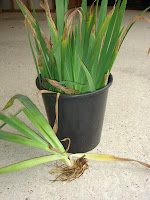 A year ago we were suffering the worst Winter in a generation. We were still at Linden Barn and not at all certain where we would be living next Christmas Eve. So it is a joy to have put the stresses of moving home behind us and to be in a wonderful new house creating a garden from scratch again. Of course, to be able to be outside gardening at this time of year is a real bonus and I have been busy planting more box hedging, raking gravel pathways, staking recently planted trees and planting another Apple in the Fruit Garden.
A year ago we were suffering the worst Winter in a generation. We were still at Linden Barn and not at all certain where we would be living next Christmas Eve. So it is a joy to have put the stresses of moving home behind us and to be in a wonderful new house creating a garden from scratch again. Of course, to be able to be outside gardening at this time of year is a real bonus and I have been busy planting more box hedging, raking gravel pathways, staking recently planted trees and planting another Apple in the Fruit Garden.I have been pondering how to divide off the Fruit Garden from the main garden for some time. A beech hedge maybe? Or a more formal arrangement of Yew cones? Vanessa then came up with a stroke of genius - why not plant 'U' shaped Apple Cordons. These have the advantage of being fruit trees and as such work well with the other trees in the Fruit Garden while also providing an informal boundary. Today I planted the first of what will be three trees that make up this boundary. It is an Apple Braeburn U-Cordon. This is a dessert apple and was originally discovered in New Zealand. It has medium sized, crisp, firm, aromatic red fruits which can be picked each October.
Nothing like planting a tree to raise the spirits on a Christmas Eve. And I shall be raising a glass of spirits this evening as we enjoy the begining of Yule-tide. Merry Christmas!








































